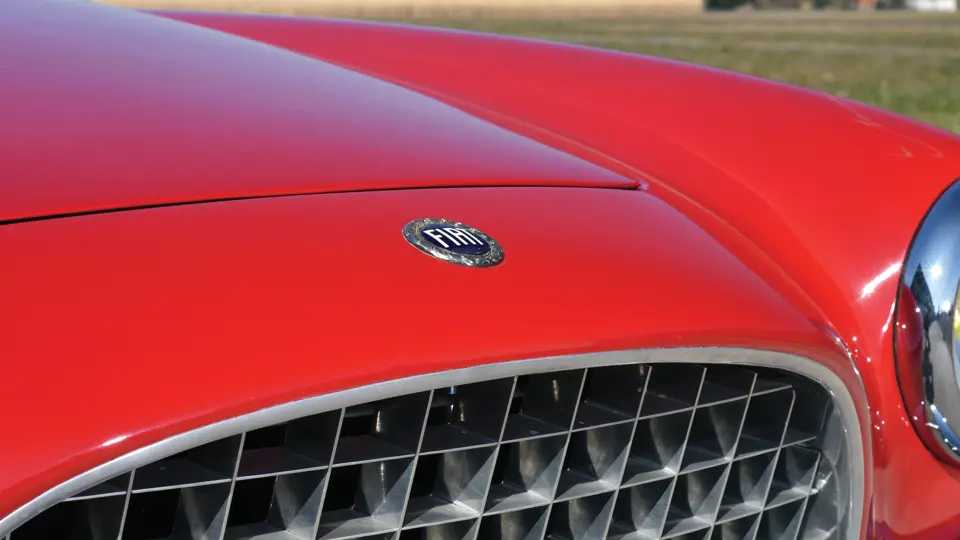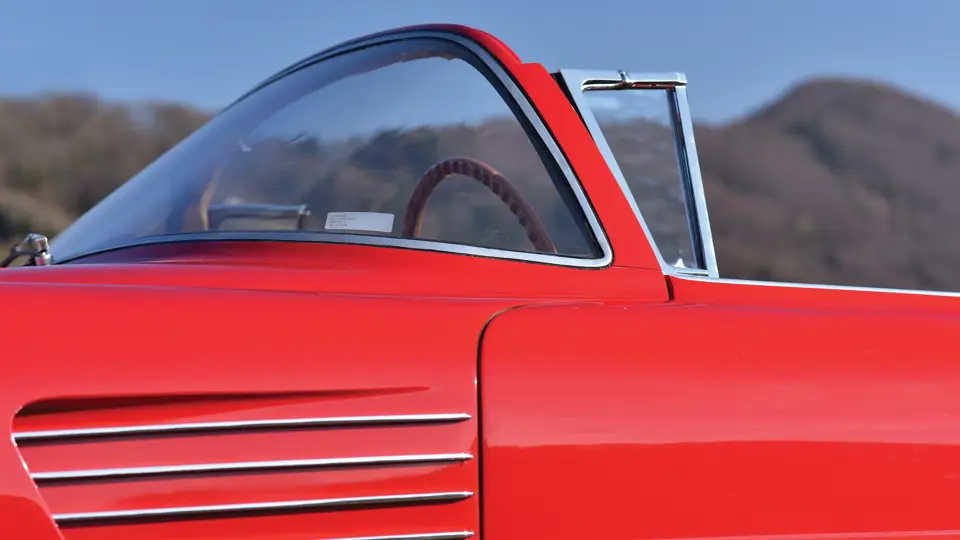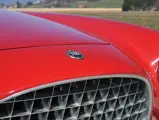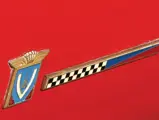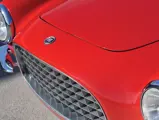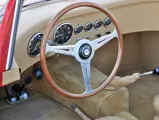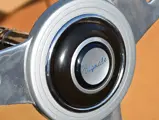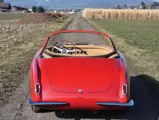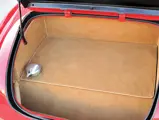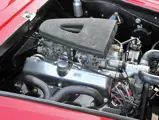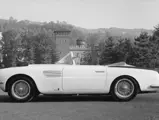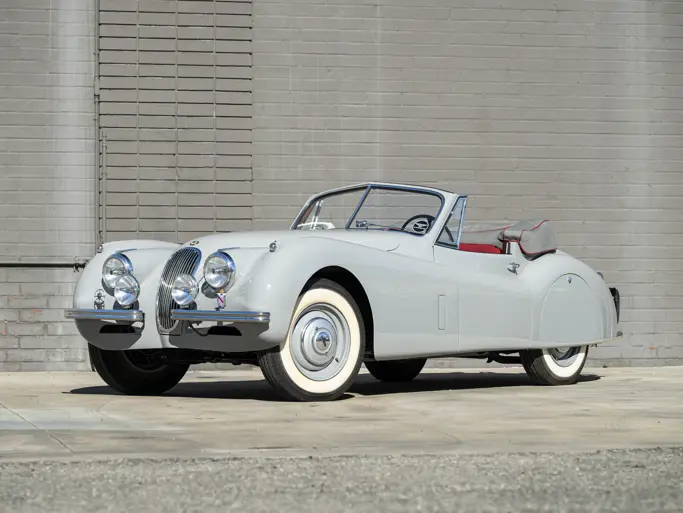115 bhp, 1,996 cc OHV V-8 engine, five-speed Alfa Romeo manual transmission, four-wheel coil-spring independent suspension, and four-wheel hydraulic drum brakes. Wheelbase: 2,400 mm
115 cv, motore 8 cilindri a V da 1.996 cc e singola albero a camme in testa, trasmissione Alfa Romeo manuale a cinque marcie, sospensioni a molle elicoidali su tutte e quattro le ruote e quattro freni a tamburo a comando idraulico. Passo: 2.400 mm
Of all the famed Italian automakers, Fiat is not normally recognised as a builder of lavish coachbuilt grand touring cars. The Italian automaker’s first engines were four-cylinder units, often of gargantuan proportions. Fiat produced its first six-cylinder engine in 1907 and even a V-12 from 1921 to 1922. However, it was not until 1952 that Fiat would produce an engine with eight cylinders, and the chassis and bodies it resided in were just as special as the engine.
This 8V model, or Otto Vu in Italian, was built for two years only, in 114 examples, and it remains one of the marque’s most legendary motor cars to this day. It was the star of the Geneva Salon in March 1952, and it goes without saying that this new Fiat got lots of attention from the motoring press. Road & Track called it “the biggest surprise of the year”, and The Motor remarked that “the last thing which had been expected from Italy’s largest car factory was a truly streamlined 2-seater saloon”. With its potent new powerplant, which was clothed by bodies designed by the world’s finest coachbuilders, everyone knew that this was truly a special automobile in every sense of the word.
CHASSIS NUMBER 000050
According to Tony Adriaensens’s book Otto Vu, 8V chassis number 000050 was exported as a chassis on 8 July 1953 to the renowned Italian coachbuilder Alfredo Vignale. Adriaesens notes that Vignale would work with his stylist, the talented Giovanni Michelotti, to discuss potential designs, and then the two would work together to evolve and “flesh out” a final automobile.
This process resulted in Vignale bodying ten 8V chassis, all to Michelotti designs, of which the car offered here, number 000050, is the only cabriolet and one of very few open bodies produced for the 8V by any coachbuilder. The drawing for the cabriolet notes that it was an exclusive design created for a Sig. Leone. It bears a remarkable resemblance to a similar coupé built by Vignale on another 8V chassis, but it has the breezy nonchalance that only a convertible top can offer.
Whatever became of the mysterious Sig. Leone is unknown, but the car is believed to have actually been delivered new in the United States, where photographs were taken of it in Florida in late 1954. It is believed that its original owner was Sunshine State resident John Harrigan, who took delivery of it in September of that year. Photographs show that the car was originally fitted with larger, heavier bumpers, a different dashboard arrangement, and painted wire wheels.
In the early 1990s, the attractive 8V was discovered in the Utah desert by well-known enthusiast Don Williams. Mr Williams was very involved in the 8V market at the time, and he did not hesitate to purchase the car and have it restored in its present livery: a classic Italian racing red with a tan leather interior and chrome wire wheels. In a recent telephone conversation, he noted that the car, as-purchased, had no engine, which was typical of 8Vs sold in America, where service for the complex V-8s was not readily available. He acquired another engine, number 000184, which is believed to have been a factory replacement engine from another chassis, and he installed it in the car.
It is important to note that, according to Mr Williams, when found, the car had its present delicate competition-style “bumperettes” and redesigned dashboard arrangement, indicating that these modifications were performed by an early American owner. A five-speed Alfa Romeo manual transmission was also fitted, and it is still installed today, as it is a desirable and suitable replacement for the fragile and finicky original Fiat four-speed unit.
This car, which has recently been serviced and is offered for sale today from a prominent European collection, is amongst the most striking, sensual, dramatic, and certainly desirable of all 8Vs, as it is a rare open-top variant by one of Italy’s premier coachbuilders. Now, as then, it is just at home in sunny Florida as it is in the hills of Italia.
Di tutti i costruttori di auto italiane, la Fiat non è normalmente associata a sontuose auto da gran turismo costruite su misura. I primi motori costruiti da questa Azienda erano costituiti da quattro cilindri in linea spesso di proporzioni gigantesche. La Fiat ha prodotto il suo primo sei cilindri in linea nel 1907 e persino un V-12 tra il 1921 e il 1922. Nonostante ciò, si dovette aspettare il 1952 per vedere il suo primo motore ad otto cilindri, che andò ad equipaggiare telai speciali tanto quanto questo motore.
Il modello 8V, normalmente chiamato Otto Vu in lingua italiana, fu in listino per due anni soltanto, fu prodotto in soli 114 esemplari e rimane tutt'ora una delle auto più leggendarie costruite della fabbrica. Quando fu presentata al Salone di Ginevra, nel marzo del 1952, fu oggetto di numerose attenzioni da parte della stampa specializzata. La rivista Road & Track la definì come "la più grande sorpresa dell'anno" e The Motor dichiarò che "l'ultima cosa che ci aspettavamo dal più grande costruttore di auto italiano era un'aerodinamica berlinetta 2 posti". Con la sua inedita motorizzazione, coperta dalle carrozzerie lastrate dai migliori stilisti di automobili al mondo, la fiat Otto Vu era un'automobile speciale sotto ogni aspetto.
IL NUMERO DI TELAIO 000050
Secondo il libro di Tody Adriansens's Otto Vu, lo chassis numero 000050 fu consegnato presso il rinomato carrozziere italiano Alfredo Vignale l' 8 luglio del 1953. Adriansens indica come Vignale discusse con il suo stilista, il talentuoso Giovanni Michelotti, i disegni potenziali che sarebbero poi stati sviluppati da entrambi per sviluppare e scolpire la forma finale dell'automobile.
Questo fatto portò Vignale a carrozzare dieci telai 8V, tutti basati sui disegni di Michelotti, tra cui lo chassis numero 000050, la sua unica versione cabriolet ed una delle poche prodotte su questa base da qualsiasi altro carrozziere. Il disegno di questa cabriolet fu realizzato esclusivamente per un certo Sig. Leone ed ha una straordinaria somiglianza ad un coupé allestito da Vignale su un altro telaio 8V. La differenza tra le due sta nella nonchalance e nel piacere di guida che solo una cabriolet può offrire.
Chi fosse questo misterioso Sig. Leone non si è mai saputo, ma si pensa che quest'auto fu consegnata nuova negli Stati Uniti, dove le furono scattate diverse fotografie in Florida nel tardo 1954. Si ritiene che il primo proprietario fu il residente dello Sunshine State John Harrigan, che prese in consegna l'auto nel settembre di quell'anno. Le fotografie dimostrano come la macchina era equipaggiata con paraurti più ampi e pesanti, con un cruscotto diverso e cerchi a raggi verniciati.
Nei primi anni '90, questa attraente 8V fu ritrovata negli Utah dal noto appassionato Don Williams. Costui era grandemento coinvolto nel mercato delle 8V e non esitò ad acquistare la macchina per riportarla successivamente nello stato in cui la vediamo oggi: un classico rosso corsa italiano con interni in pelle beige con ruote a raggi cromati. Durante una conversazione al telefono, il Sig.Williams indicò che al momento dell'acquisto non aveva il motore, una caratteristica tipica delle 8V vendute in America, dove ancora non era disponibile una rete di manutenzione per il complesso V-8. Dichiarò quindi che acquistò un altro motore, numero 000184, che si ritiene essere stato un'unità sostitutiva per un altro chassis, e lo montò sulla macchina.
E'importante notare che, stando alle dichiarazioni del Sig.Williams, quando fu ritrovata la macchina, essa presentava dei delicati mini paraurti da competizione e un cruscotto diverso. Tutto questo indicava che queste modifiche erano state fatte da uno dei primi proprietari americani. Inoltre la macchina fu dotata di una trasmissione Alfa Romeo a cinque velocità, una modifica presente ancora oggi, che costituisce un ideale rimpiazzo per la delicata trasmissione originale Fiat a quattro velocità.
Quest'auto, che ha appena subito un completo intervento di manutenzione ed è oggi offerta in vendita da un prominente collezionista europeo, è una delle 8V più emozionanti, sensuali, drammatiche e desiderabili ed è anche una rara variante cabriolet di uno dei migliori carrozzieri d'Italia. Oggi come allora, è a casa sua sia nella Florida baciata dal sole che nelle colline d'Italia.
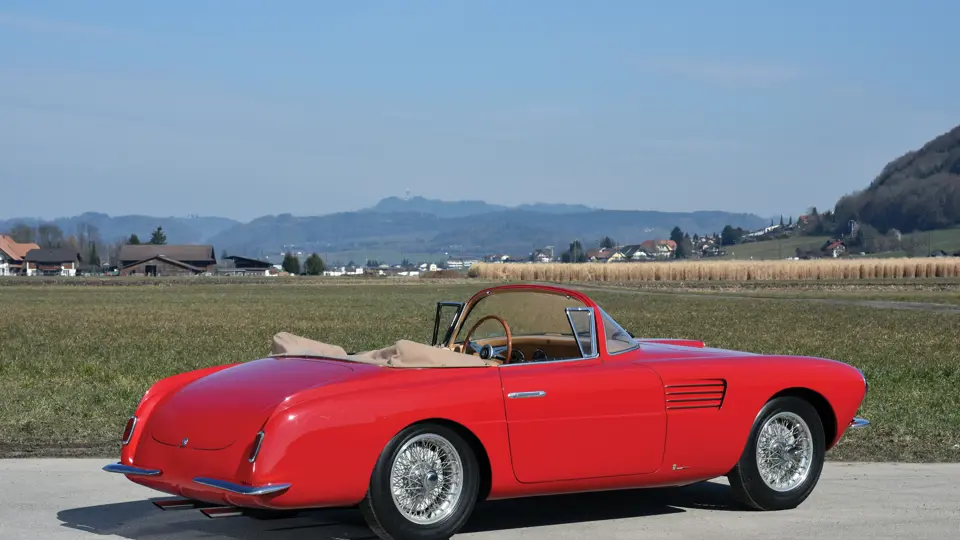

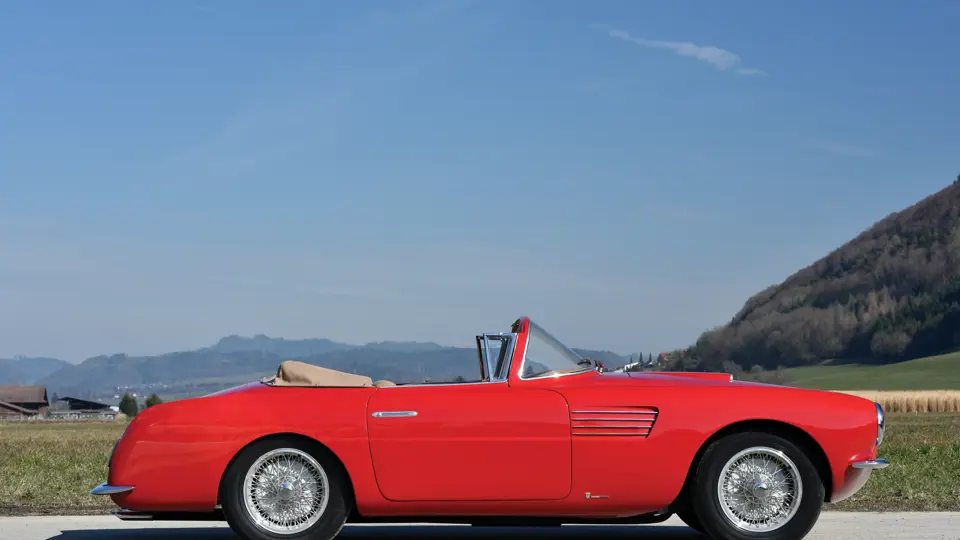

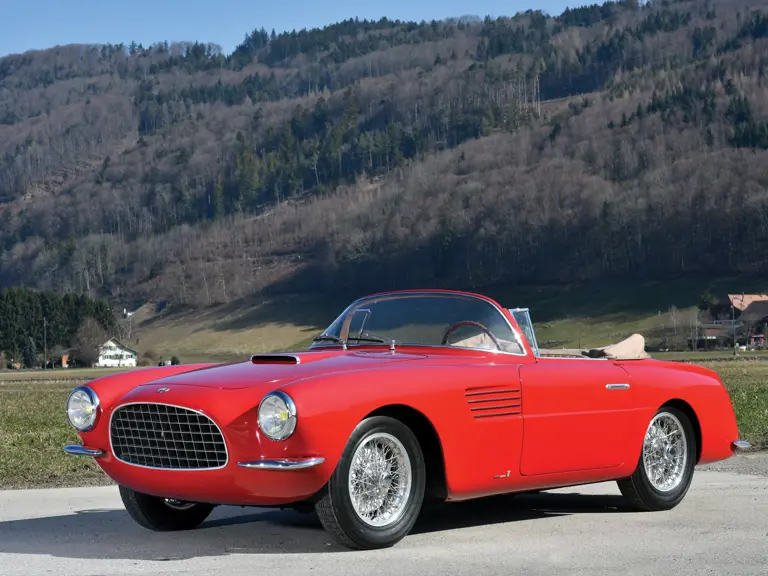
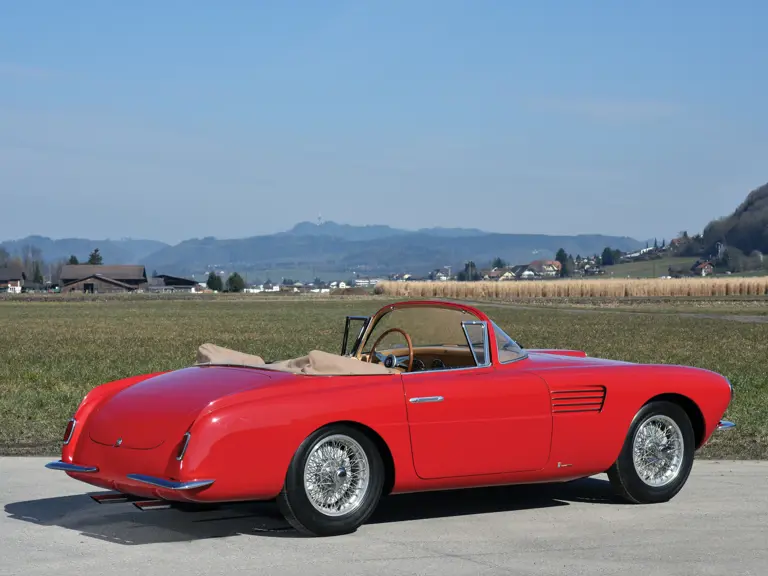
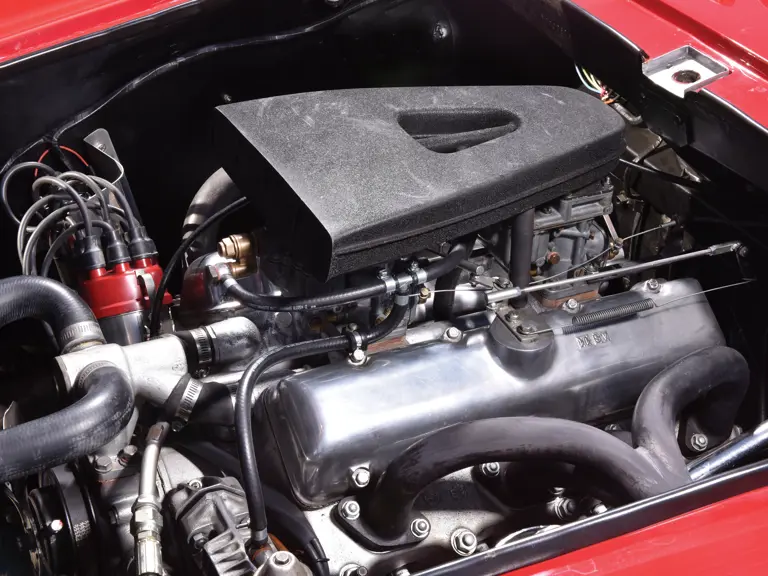

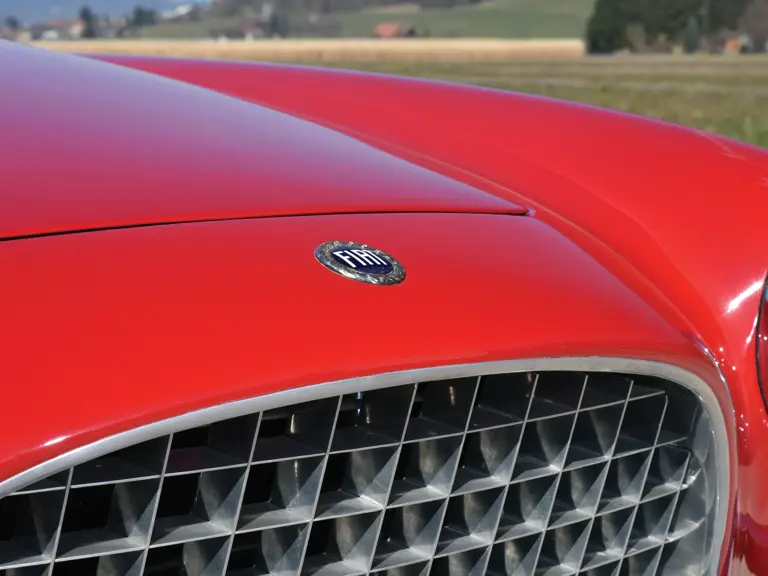
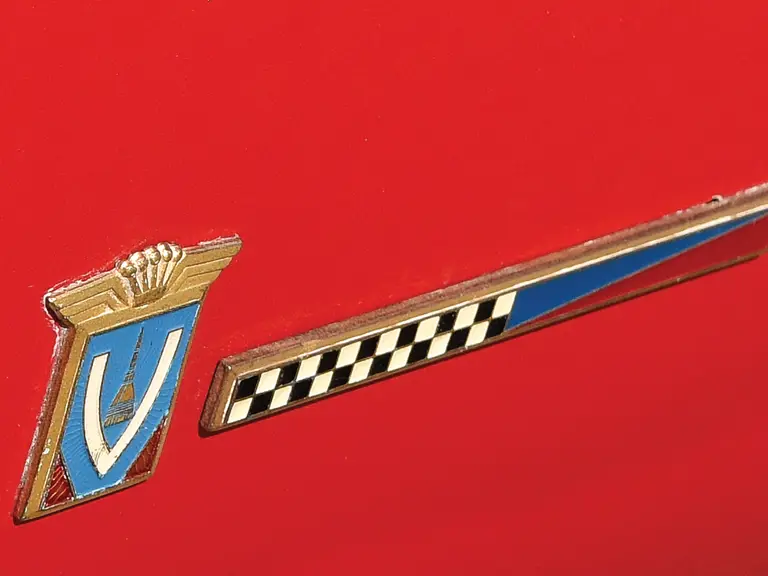

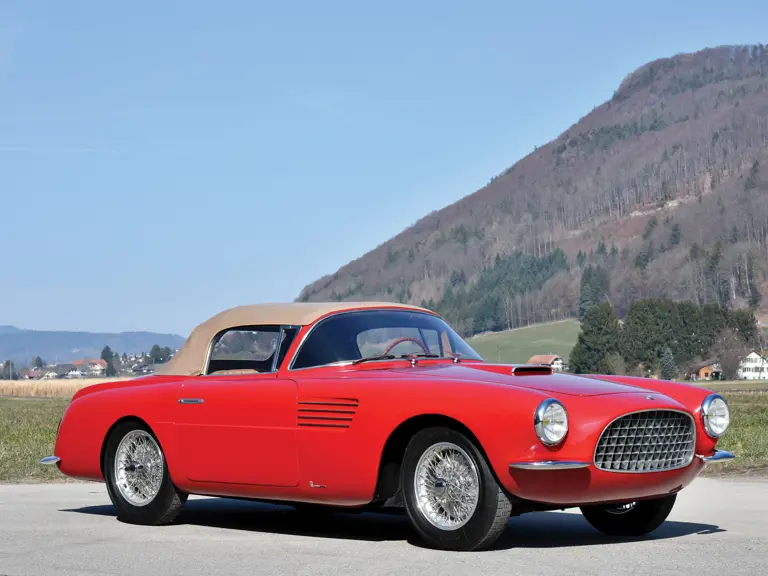
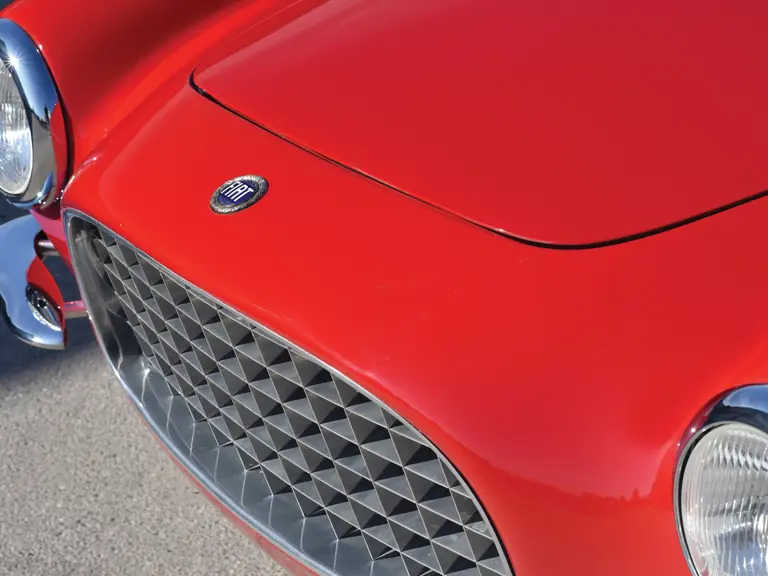
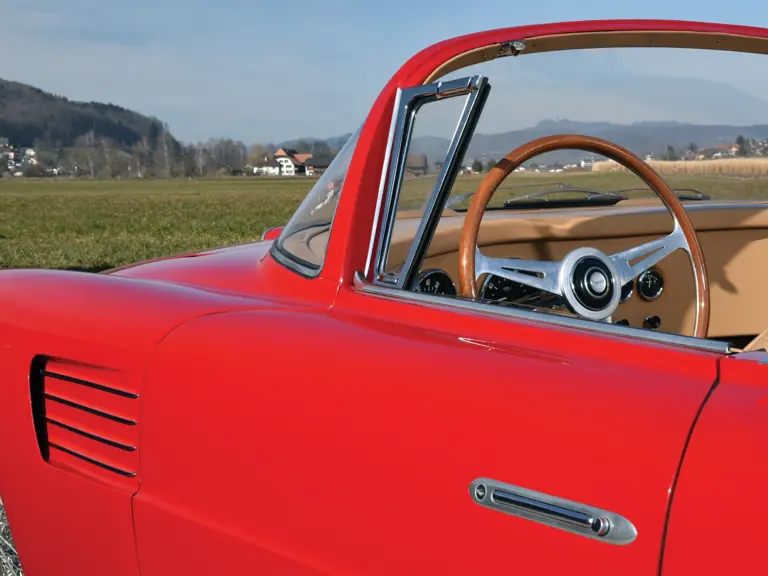
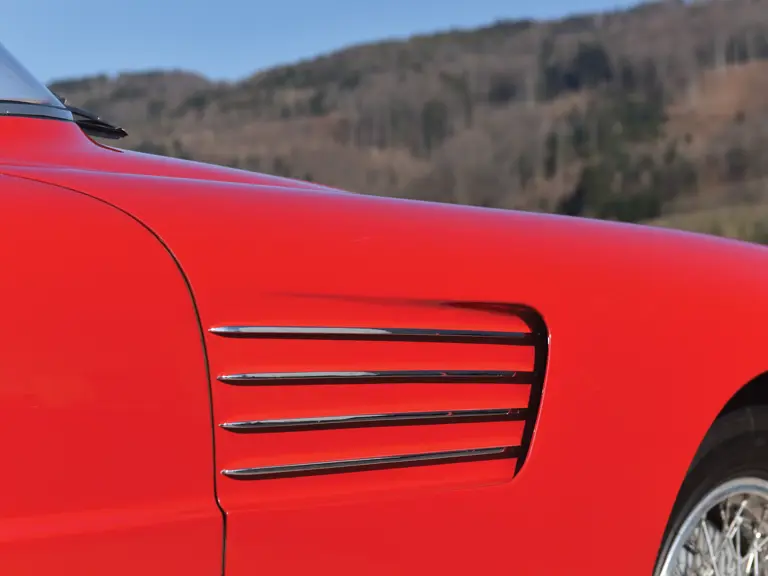
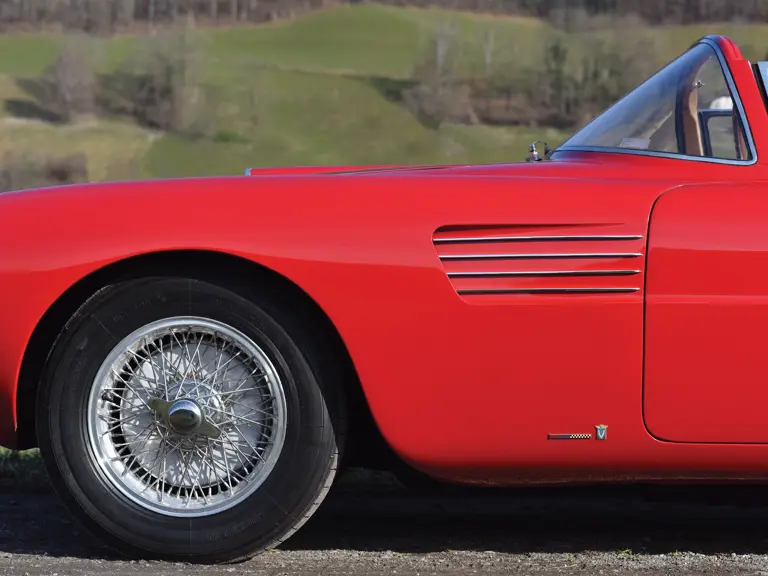
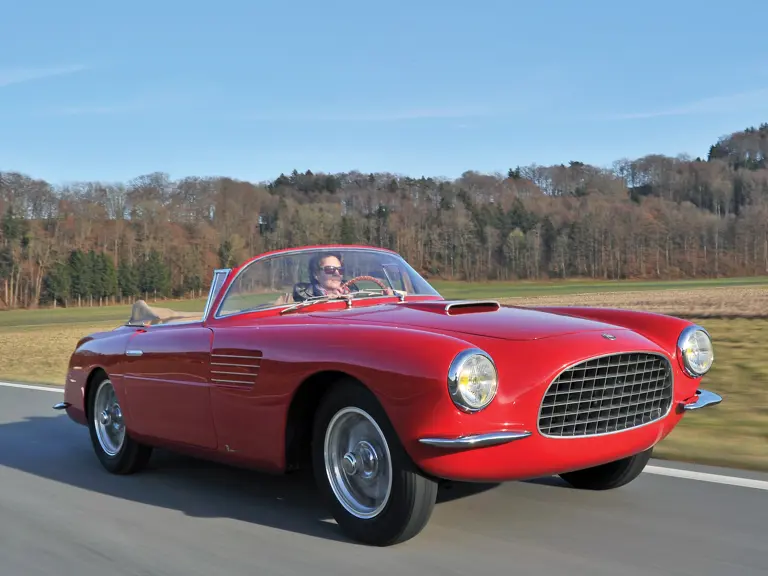
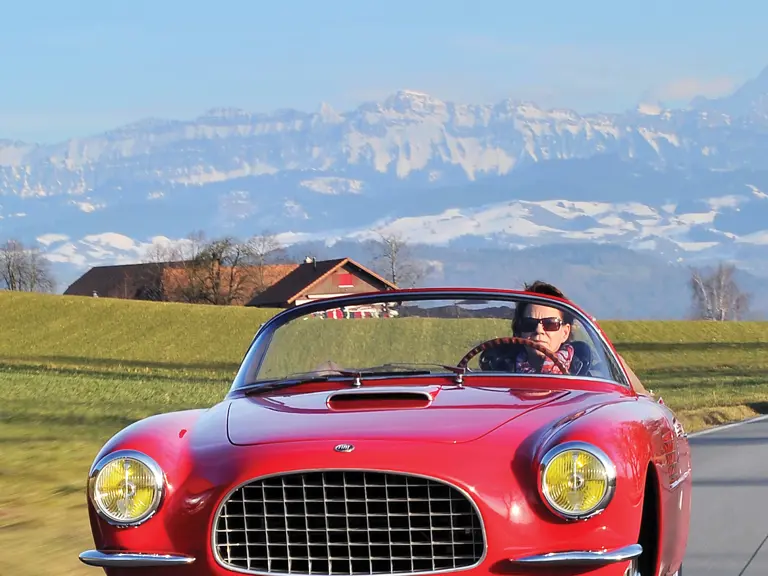


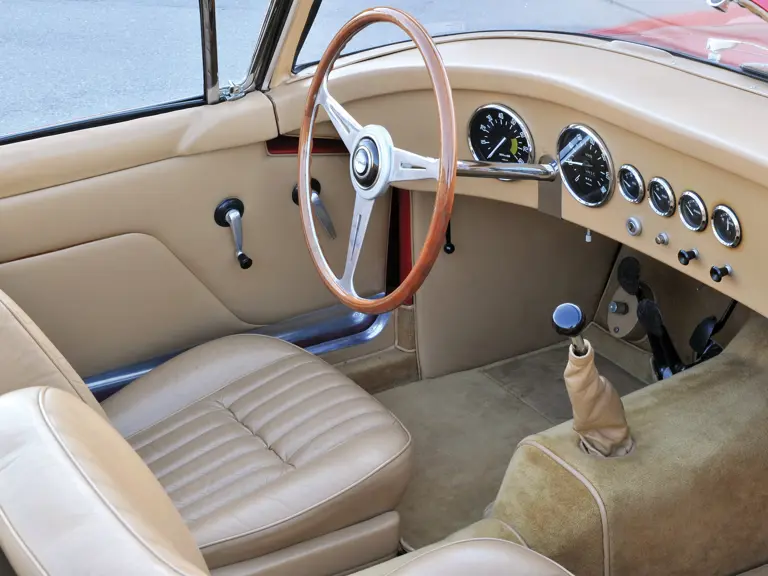
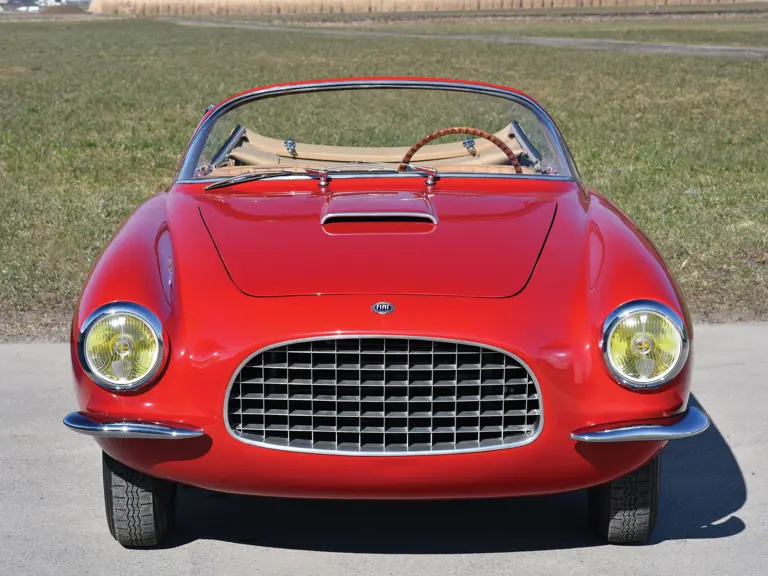
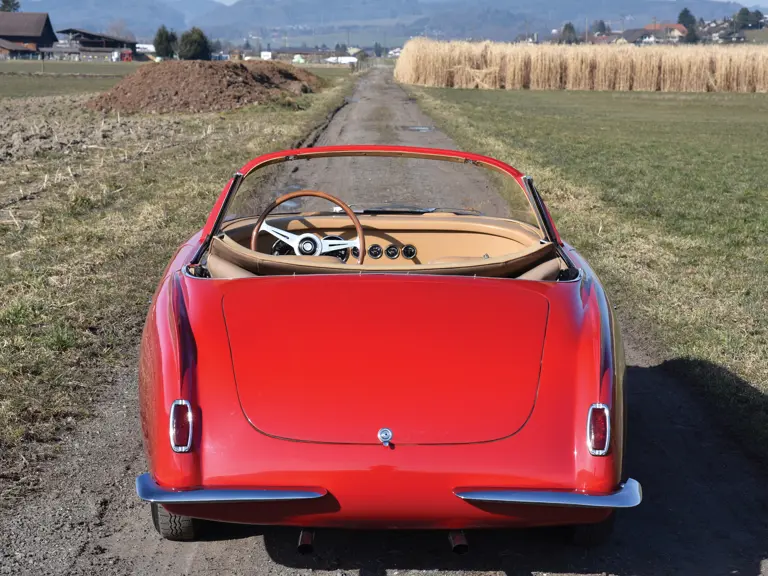

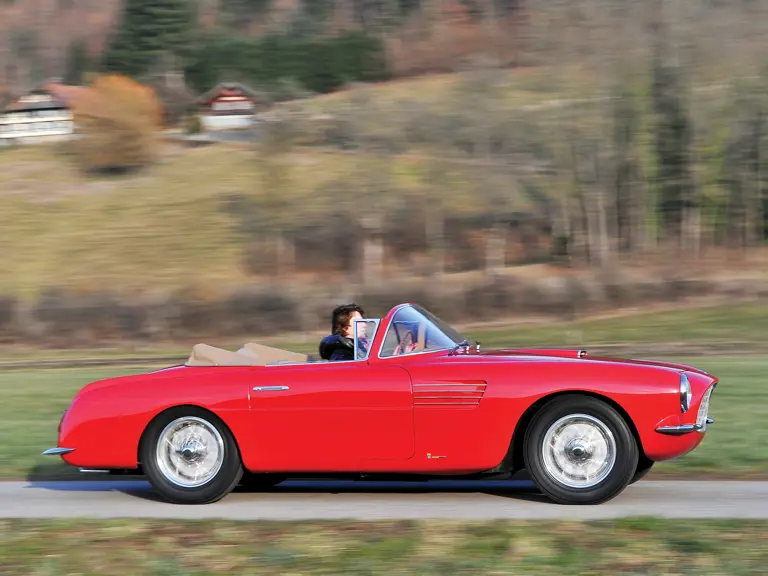

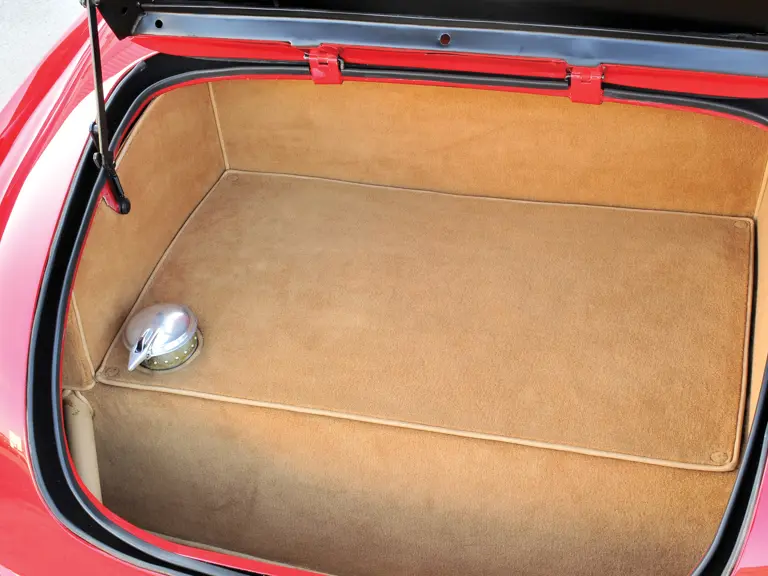
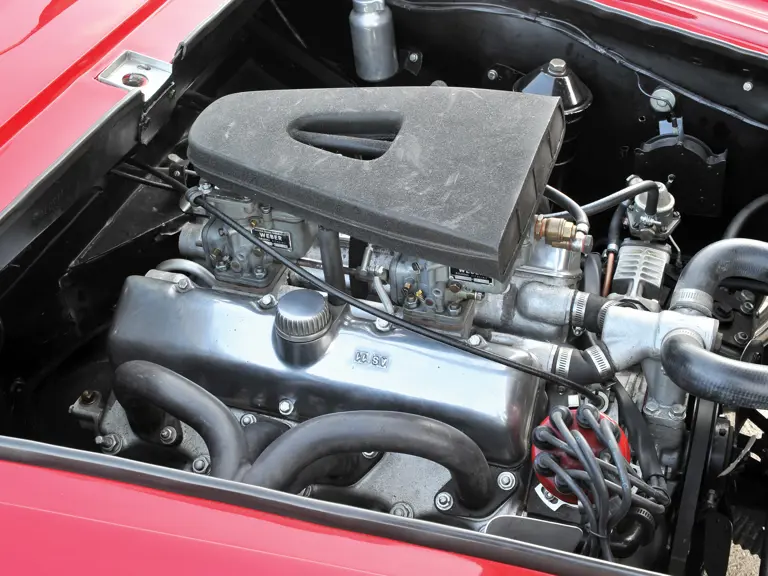
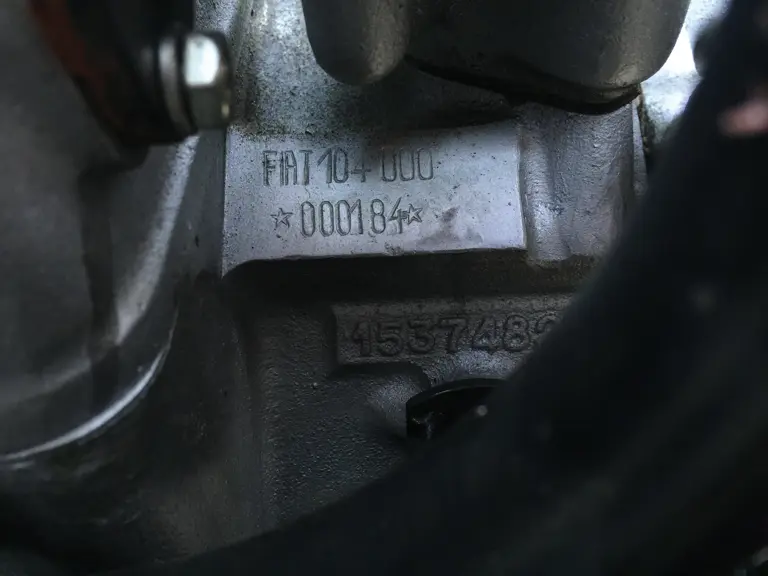
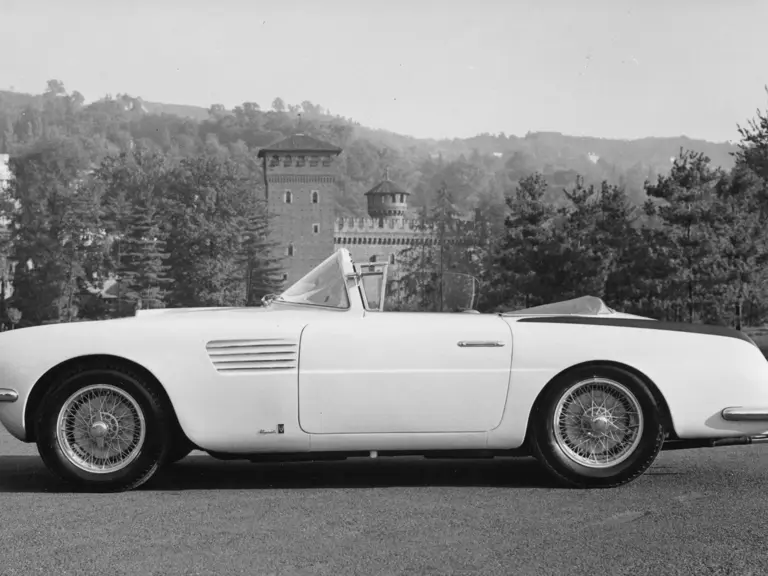

 | Cernobbio, Italy
| Cernobbio, Italy
